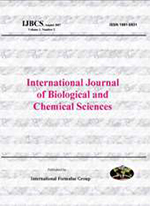
Spatio-temporal dynamic of land use change in the Moungo division, Littoral Region, Cameroon : influence on the expansion of banana-based agroforestry systems
Year of publication: 2020
Author: M. R. Tsewoue, M. Tchamba, M. L. Avana, A. D. Tanougong
Abstract
This study aims to characterize, over a 32-year period between 1986 and 2018, the spatial and temporal changes that occurs in the Moungo division located in the Littoral Region of Cameroon has undergone due to expansion bananas plantation and various pressures in the natural resources use. Landsat satellite images from 1986, 2001 and 2018 were exploited using remote sensing and GIS. The unsupervised classification yielded eight land use classes (dense forest, open forest, plantation and croplands, bare soil, inhabited area, herbaceous savannah and water plans). The evolutionary trend of vegetation formations is essentially regressive for dense and open forest with a decrease from 336 924.51 ha to 272 887.04 ha between 1986 and 2018, indicating a regression rate of 16.54% of the total area. On the other hand, it is progressive for plantations/croplands, herbaceous savannas, and inhabited areas, whose areas increased from 50 231.24 ha in 1986 to 111 325.41 ha in 2018, thus an increment rate of 15.77%. The degradation factors are mainly anthropogenic and include agriculture, overgrazing and increasing human population. As a result, the natural vegetation is being fragmented and transformed into cultivated areas and human inhabitations.
